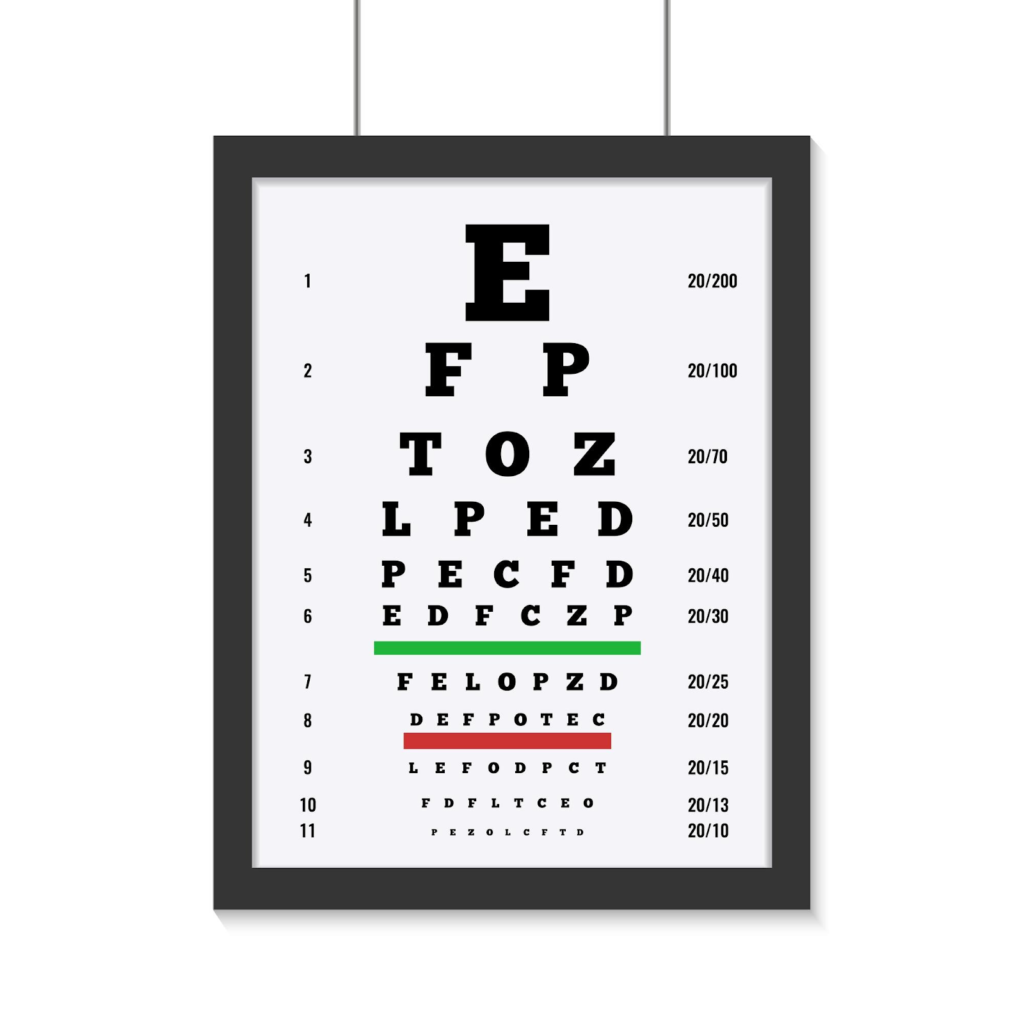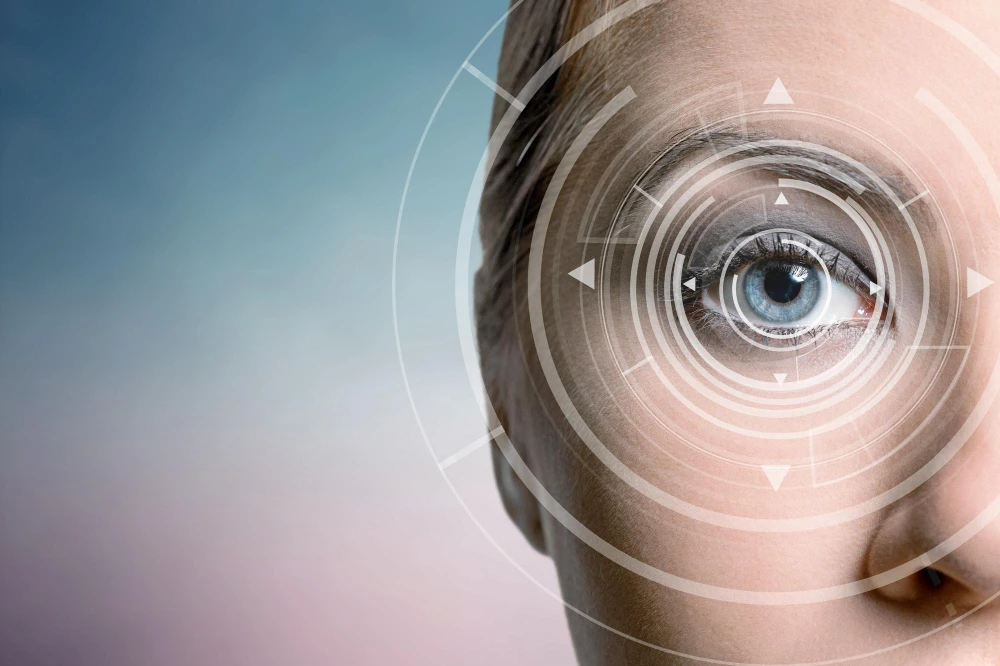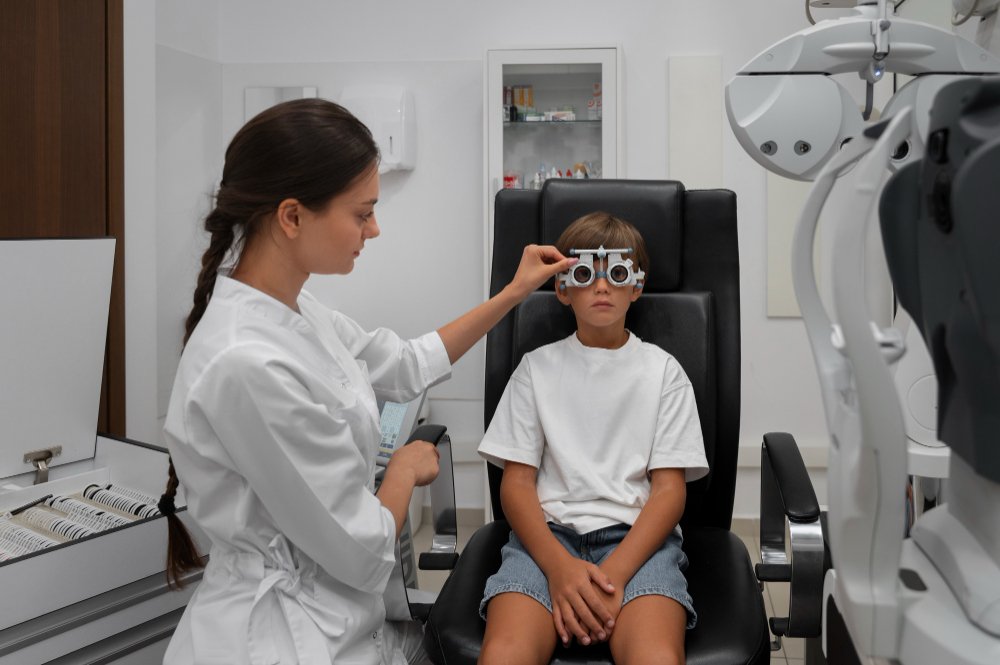What is 20/40 Vision?
20/40 vision is a standard measurement of visual acuity that describes how well a person sees at a distance. This term is derived from the Snellen eye chart test, which is used by eye care professionals to assess vision clarity.
If you have 20/40 vision, it means that you must be at a distance of 20 feet to see what a person with normal vision (20/20) can see clearly from 40 feet away. In other words, your vision is not as sharp as the average person with normal eyesight. While 20/40 vision is not considered legally blind, it may require correction depending on your daily visual needs. A comprehensive eye exam can help determine if corrective lenses or other treatments are necessary to improve your vision.
Visual Acuity: Understanding the Numbers
20/20 Vision: The Standard Benchmark
20/20 vision is the benchmark for what is considered normal eyesight. A person with 20/20 vision can see objects clearly at 20 feet—the standard distance for an eye test. However, having 20/20 vision does not necessarily mean perfect vision. It only measures visual acuity and does not account for other aspects like depth perception, color vision, and peripheral vision.
20/40 Vision: Interpreting the Measurement
20/40 vision means that you see at 20 feet what a person with normal vision sees at 40 feet. This level of visual acuity is considered mildly impaired but is still functional for many activities. Some states in the U.S. require a minimum of 20/40 vision (with or without corrective lenses) to obtain an unrestricted driver’s license.
Causes of 20/40 Vision
Refractive Errors
Refractive errors are the most common cause of 20/40 vision. These occur when the shape of the eye prevents light from focusing directly on the retina, leading to blurry vision. Common refractive errors include:
- Myopia (Nearsightedness) – Difficulty seeing distant objects clearly.
- Hyperopia (Farsightedness) – Difficulty seeing close objects clearly.
- Astigmatism – An irregularly shaped cornea or lens causing blurred vision at all distances.
Presbyopia and Aging
As people age, their eyes lose the ability to focus on nearby objects due to a condition called presbyopia. This natural aging process, which typically begins around the age of 40, can contribute to 20/40 vision, particularly for close-up tasks like reading.
Cataracts
Cataracts are a clouding of the eye’s natural lens, leading to blurred vision. They typically develop with age and can cause a gradual decline in visual acuity, resulting in 20/40 or worse vision if left untreated. Cataract surgery is a common procedure to restore vision in affected individuals.
Impact of 20/40 Vision on Daily Life
Driving and Legal Requirements
Many states in the U.S. require at least 20/40 vision for an unrestricted driver’s license. However, if your vision is worse than 20/40, you may need corrective lenses to meet the legal requirements for driving. If your vision is 20/50 or worse, some states may impose restrictions or require additional testing.
Reading and Close-Up Work
Individuals with 20/40 vision may find it more difficult to read fine print, especially in low-light conditions. They may experience eye strain, headaches, or difficulty focusing on small text. Many people with 20/40 vision choose to wear reading glasses or prescription lenses for improved clarity.
Correction Options for 20/40 Vision
Eyeglasses
Eyeglasses are one of the simplest and most effective solutions for correcting 20/40 vision. A prescription lens can help focus light correctly on the retina, improving clarity at various distances. Glasses are available in different styles, including single-vision lenses for distance correction and bifocal or progressive lenses for multiple focal points.
Contact Lenses
Contact lenses offer a convenient alternative to eyeglasses, providing a wider field of view and more natural vision correction. They are available in various types, including soft lenses, rigid gas-permeable lenses, and multifocal lenses for individuals who need both near and distance correction.
Laser Eye Surgery
Laser eye surgery, such as LASIK or PRK, is a permanent vision correction option for individuals with refractive errors. These procedures reshape the cornea to allow light to focus correctly on the retina, often improving vision to 20/20 or better. However, not everyone is a candidate for laser eye surgery, and a consultation with an eye care professional is necessary to determine eligibility.
When to Consult an Eye Care Professional
Struggling with blurry vision, eye strain, or difficulty reading? It’s time for a professional eye exam! At Vision Gallery, our expert eye care professionals are here to assess your vision, recommend the best corrective options, and ensure your eyes stay healthy.
Whether you need glasses, contact lenses, or are considering laser surgery, we’ll help you find the perfect solution for clear, comfortable vision. Don’t let vision problems affect your daily life—schedule your appointment at Vision Gallery today and see the world with clarity!




